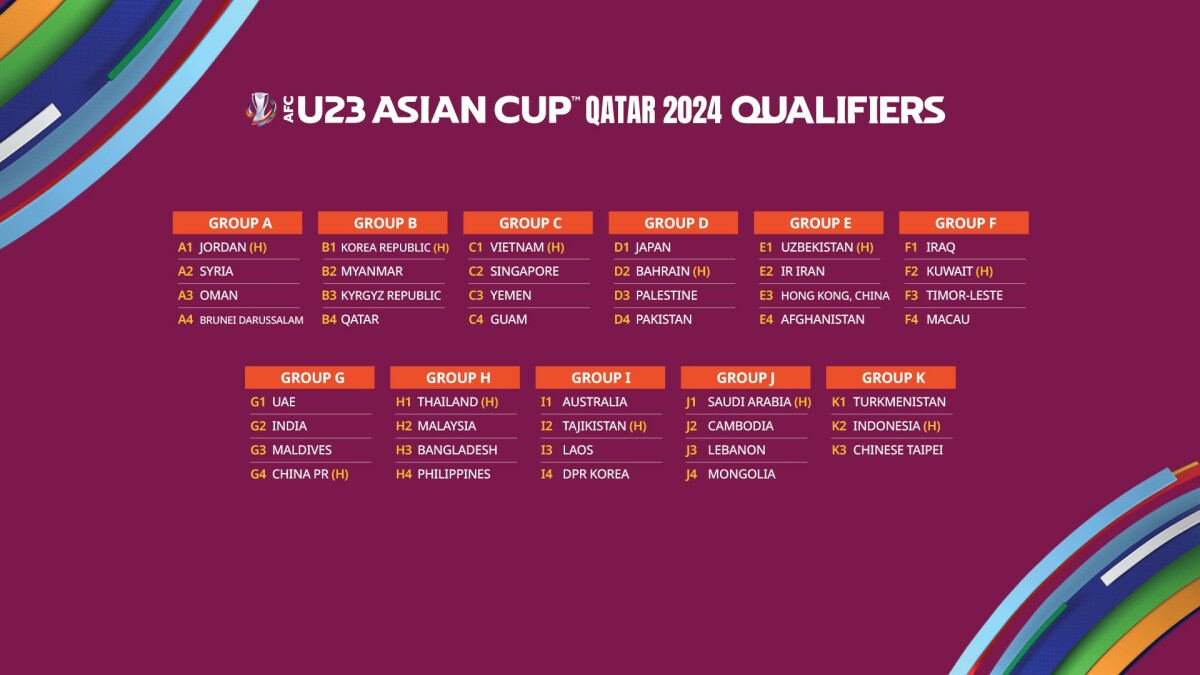
The Anticipated Roar: A Speculative Look at the 2025 Aichi-Nagoya Asian Games Football Fixtures
The quadrennial Asian Games stand as a pinnacle of continental sporting prowess, and few disciplines capture the imagination quite like football. As the countdown to the 2025 Aichi-Nagoya Asian Games begins, the football tournament promises to be a spectacular showcase of emerging talent and established powerhouses from across Asia. While the official draw and detailed fixtures are still a considerable time away – typically not released until closer to the event – the anticipation is already palpable.
This article delves into a speculative, yet informed, projection of what the football tournament at Aichi-Nagoya 2025 might look like. Drawing on historical formats, the strengths of various national teams, and the logistical considerations of a multi-sport event, we can paint a vivid picture of the potential group stage battles, knockout thrills, and the ultimate quest for gold.
A Crucial Disclaimer: The Unveiled Calendar
It is paramount to state upfront that the detailed match schedules, group compositions, and precise timings for the 2025 Aichi-Nagoya Asian Games football tournament are not yet officially released. This article is built upon informed speculation, historical precedent, and logical projections based on what we typically see at major tournaments. The actual fixtures, once announced by the Olympic Council of Asia (OCA) and the Aichi-Nagoya Organising Committee, may differ significantly.
Understanding the Tournament Format: Two Paths to Glory
The Asian Games football competition traditionally comprises two distinct tournaments:
- Men’s Tournament: This is primarily an Under-23 (U-23) competition, with each participating nation permitted to include a maximum of three overage players in their squad. This format aligns with the Olympic football tournament, serving as a vital development platform for young Asian stars while allowing a touch of senior experience. Historically, around 20-24 teams participate.
- Women’s Tournament: This is a full senior international competition, often carrying significant weight as a potential qualifier or a crucial test ahead of Olympic or World Cup cycles. The number of participating women’s teams is usually smaller, typically ranging from 12-16.
Both tournaments follow a standard format:
- Group Stage: Teams are divided into groups (e.g., 4 teams per group for men, 3-4 for women), playing a round-robin format.
- Knockout Stage: The top teams from each group, along with a specified number of best third-placed teams (for the men’s tournament), advance to the quarter-finals, followed by semi-finals, a bronze medal match, and the grand final.
The Stage is Set: Anticipated Venues in Aichi-Nagoya
Japan, known for its superb sporting infrastructure, will provide world-class venues. While the specific stadiums for football are yet to be confirmed, likely candidates in the Aichi Prefecture and surrounding areas include:
- Toyota Stadium (Toyota City, Aichi): A modern, large-capacity stadium with a retractable roof, capable of hosting major matches, including potential semi-finals or the final.
- Paloma Mizuho Stadium (Nagoya): A historic venue that has undergone renovations, providing a good atmosphere for group stage and early knockout matches.
- Nagoya Port Soccer Stadium (Nagoya): Potentially a smaller venue suitable for group stage matches.
- Other regional stadiums: To accommodate the large number of matches, several other professional or municipal stadiums within Aichi Prefecture will likely be utilized.
The distribution of matches across multiple venues will ensure logistical efficiency and allow fans across the region to experience the excitement.
The Contenders: Who Will Vie for Gold?
Asia boasts a diverse football landscape, with traditional powerhouses and rapidly improving nations.
Men’s Tournament (U-23 + 3 Overage):
- East Asia: Japan (hosts, always strong), South Korea (defending champions, consistently formidable), China PR (improving, home advantage for some), DPR Korea (wildcard), Hong Kong.
- West Asia: Saudi Arabia (rising force, strong youth development), Qatar (AFC Asian Cup champions, experienced), Iran (physical and tactical), UAE, Uzbekistan (consistent performers in youth tournaments).
- Southeast Asia: Thailand, Vietnam (impressive recent performances), Malaysia, Indonesia (passionate fan base).
- South Asia/Central Asia: India, Bangladesh, Kyrgyzstan, Tajikistan (emerging).
- Australia: Always a contender with a blend of European-based and domestic talent.
Women’s Tournament (Senior):
- East Asia: Japan (defending champions, global top tier), China PR (resurgent force), South Korea (consistent performers), DPR Korea (physical and direct).
- Southeast Asia: Vietnam (steadily improving), Thailand, Philippines (recent World Cup participants).
- West Asia/Central Asia: Uzbekistan (emerging), Jordan.
- Australia: Matildas are a global powerhouse and strong favorites.
The Speculative Fixture Landscape: Imagining the Groups and Matchups
Based on the number of teams and the typical draw mechanics (seeding based on previous performance), we can envision some compelling group stage scenarios. Let’s hypothetically project a 24-team men’s tournament (6 groups of 4) and a 16-team women’s tournament (4 groups of 4).
Men’s Tournament: Potential Group Stage Thrillers
Given the U-23 format, teams’ strengths can fluctuate, making for unpredictable results.
- Hypothetical Group A (The Host’s Journey):
- Japan (Hosts, Seeded) vs. Thailand (Southeast Asian challengers)
- Saudi Arabia (West Asian powerhouse) vs. Bahrain (Gritty West Asian side)
- Analysis: Japan would aim for a strong start on home soil, while Saudi Arabia would look to assert dominance. The match between Thailand and Bahrain could be a crucial decider for the second spot, or even a best third-place qualification. Japan vs. Saudi Arabia would likely be the group’s marquee clash, potentially deciding the group winner.
- Hypothetical Group B (The Defending Champions’ Test):
- South Korea (Defending Champions, Seeded) vs. Uzbekistan (AFC U-23 Champions 2018, strong youth setup)
- China PR (Eager to impress) vs. Kuwait (West Asian dark horse)
- Analysis: This group immediately screams “Group of Death.” South Korea and Uzbekistan, two of Asia’s strongest U-23 nations, would face an early acid test. The outcome of their direct encounter could significantly influence the knockout bracket. China PR, with their growing football ambitions, would face immense pressure to perform against top-tier opponents.
- Hypothetical Group C (West Asian Derby):
- Iran (Seeded) vs. Qatar (AFC Asian Cup experience)
- Vietnam (Southeast Asian surprise package) vs. Palestine (Resilient competitors)
- Analysis: Iran and Qatar would likely engage in a tactical battle for supremacy. Vietnam, known for their disciplined play and counter-attacking prowess, could spring an upset against either West Asian giant, making them a dangerous opponent.
- Hypothetical Group D (Oceana vs. Asia):
- Australia (Seeded) vs. Indonesia (Passionate support, improving league)
- Malaysia (Southeast Asian rivals) vs. Tajikistan (Emerging Central Asian force)
- Analysis: Australia would be favorites, but the Southeast Asian duo of Indonesia and Malaysia would guarantee intense, high-energy matches. Tajikistan’s disciplined approach could make them a tricky opponent, especially in the opening game.
- Hypothetical Group E (Battle for Progress):
- UAE (Seeded) vs. India (Growing football nation)
- DPR Korea (Unpredictable wildcard) vs. Kyrgyzstan (Physical and determined)
- Analysis: This group offers a fascinating mix. UAE would be expected to lead, but India’s recent rise and the unpredictable nature of DPR Korea could create an open contest for the second spot.
- Hypothetical Group F (The Dark Horse Group):
- Iraq (Seeded) vs. Hong Kong (Persistent competitors)
- Syria (Robust West Asian side) vs. Myanmar (Seeking to make an impact)
- Analysis: While perhaps lacking a traditional powerhouse, this group could be incredibly competitive with no clear favorite. Every match would be a fight for three points, potentially leading to a tight race for qualification.
Women’s Tournament: Quest for Continental Supremacy
The women’s tournament often serves as a barometer for continental strength, with Olympic qualification implications adding extra intensity.
- Hypothetical Group A (The Host’s Path):
- Japan (Hosts, Seeded) vs. Philippines (Recent World Cup participants, rising force)
- Thailand (Experienced Southeast Asian side) vs. Jordan (West Asian contenders)
- Analysis: Japan, as one of the world’s top teams, would be strong favorites. However, the Philippines’ recent World Cup experience makes them a significant threat. Thailand and Jordan would battle for third place and potential best third-place qualification.
- Hypothetical Group B (Giants Clash):
- Australia (Seeded) vs. China PR (Olympic qualification rivals)
- Uzbekistan (Emerging Central Asian side) vs. Nepal (South Asian representatives)
- Analysis: This would be the “Group of Death” in the women’s tournament. Australia and China PR have a rich history of fierce encounters, and their match would be a highlight. Uzbekistan could play spoiler, while Nepal would gain invaluable experience.
- Hypothetical Group C (East Asian Showdown):
- South Korea (Seeded) vs. DPR Korea (Powerful, direct football)
- Chinese Taipei (Technical side) vs. India (Developing nation)
- Analysis: The inter-Korean derby would be explosive. South Korea and DPR Korea are traditional rivals, known for intense physical and tactical battles. Chinese Taipei could challenge for a knockout spot.
- Hypothetical Group D (Southeast Asian Promise):
- Vietnam (Seeded) vs. Myanmar (Improving side)
- Iran (West Asian development) vs. Bangladesh (Building for the future)
- Analysis: Vietnam would be strong favorites, but Myanmar could offer a tough challenge. This group would highlight the progress of football in various regions.
The Road to Gold: Knockout Stage Thrills
Following the group stages, the intensity escalates. Potential quarter-final matchups could see:
- Men: South Korea vs. Australia, Japan vs. Iran, Saudi Arabia vs. Uzbekistan, China vs. UAE – promising high-stakes encounters.
- Women: Japan vs. DPR Korea, Australia vs. South Korea, China PR vs. Vietnam – with fierce rivalries on display.
Semi-finals would pit the continent’s elite against each other, leading to nail-biting finishes, potentially decided by extra time or penalty shootouts. The bronze medal match, though often overlooked, is fiercely contested, offering a chance for redemption. And finally, the ultimate showdown for the gold medal, a moment of glory that etches names into the annals of Asian Games history.
Key Narratives and Players to Watch
- Japan’s Home Advantage: Can the host nation’s U-23 men’s team and the Nadeshiko Japan deliver gold on home soil? The pressure will be immense.
- South Korea’s Title Defense (Men): Can the young Taegeuk Warriors replicate their success from Hangzhou and secure back-to-back golds?
- Olympic Qualification (Women): The Asian Games often serve as a vital stepping stone or direct qualifier for the Olympics. The women’s tournament will be a fierce battle for spots.
- Breakout Stars: The U-23 format is a breeding ground for future stars. Which young talents will announce themselves on the continental stage?
- Overage Player Impact: The three overage players can significantly influence a team’s performance, providing crucial experience and leadership. Their selection will be a tactical masterstroke for coaches.
- Rivalries Renewed: Expect heated clashes between traditional rivals like South Korea vs. Japan, Saudi Arabia vs. Iran, and China PR vs. South Korea/Japan in both tournaments.
Conclusion: Anticipation Builds for Aichi-Nagoya 2025
While the official fixtures for the 2025 Aichi-Nagoya Asian Games football tournament remain under wraps, the speculative scenarios painted above highlight the immense excitement and competitive spirit that will define the event. From the rigorous group stage battles to the high-stakes knockout rounds, the quest for gold promises to deliver unforgettable moments of skill, drama, and passion.
Fans across Asia eagerly await the official draw, which will transform these hypothetical matchups into concrete realities. Until then, the anticipation continues to build for what is sure to be a spectacular football showcase, celebrating the best of Asian football talent in the heart of Japan. The roar of the crowds, the flash of skill, and the pursuit of continental glory await in Aichi-Nagoya.



